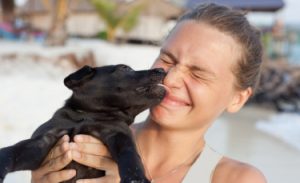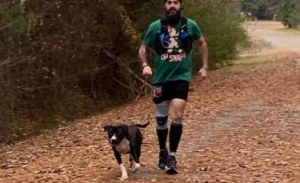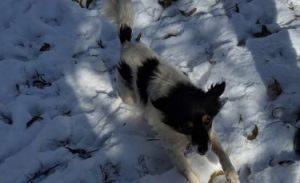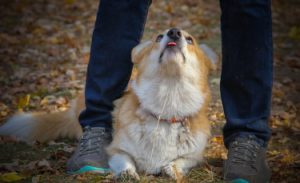Other name: Weimaraner
Pointing dog of German origin, the Weimaraner is medium to large in size. He sports an athletic body that is both slender and muscular. The ideal life companion for families, he is also the hunting dog par excellence.
<!–
–>

| Short or Long | |
| Germany | |
| Big | |
| Long |
| Sex | Weight | Cut |
|---|---|---|
| Female | From 25 kg to 35 kg | From 58 cm to 64 cm |
| Male | From 30 kg to 38 kg | From 60 cm to 70 cm |
History of the breed
It is said that the origins of the Weimaraner can be traced back to a pack of gray dogs that Louis IX brought back from Palestine . His arrival in Germany dates from the 15th century, but no source can say it is really born in Weimar. The Grand Duke Karl August was the first owner of a Braque gray Saxony-Weimar in the 17th century. He used his dog to hunt wolves and wild boars or to kill foxes.
Crossbreeding of the Weimaraner with other breeds ended in 1890. It is therefore the oldest pointing dog from Germany. It was not until the 20 th century that the longhaired pointer variety appeared.
Weimaraner Pictures

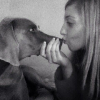
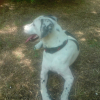
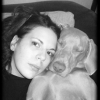
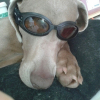
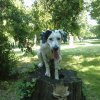
View all Weimaraner photos from Woopets members
Physical features
His coat : it is short, coarse and very thick most of the time, but some individuals have a rather long coat.
Its color : always shades of gray: mouse gray, silver gray or dark gray resembling blue.
Its head : proportional to the body, it is narrower in females. The stop is very light. The nose is large and the nose long.
His ears : wide and long, they reach the corners of the lips. They are tied high.
His eyes : rounded and slightly oblique, they are blue from birth to 6 months, then take on an amber color.
Her body : long and firm.
Its tail : powerful, it is carried quite low. It can be cut.
Behavior and character
| Affectionate | |
|---|---|
| Calm | |
| Protective | |
| Independent | |
| Hunter | |
| Barks / howls |
Behavior with others
| Cohabitation with children | |
|---|---|
| Sociable with other animals | |
| Love strangers |
The Weimaraner is as good at hunting as it is at playing with children. His inexhaustible dynamism makes him a real action dog. It adapts easily to any sporting activity even if its astonishing flair predisposes it for hunting. He can find game or even people without difficulty. He is very affectionate towards his owner and can be suspicious of strangers.
The Weimaraner
is it right for you? Take the test!
Education
| Clever | |
|---|---|
| Obedient |
The Weimaraner needs firmness from an early age . He can be stubborn or turn into a glue pot. He attaches very easily to his owners and feels a bit like a full member of the family. It is a dog which must therefore be accustomed to the lifestyle of the household as soon as possible so as not to feel abandoned or worse, to be bored. A bored Weimaraner quickly becomes a bane to his owners.
Living conditions
| Suitable for apartment living | |
|---|---|
| Good for new masters | |
| Love it hot | |
| Love the cold |
The Weimaraner can live in an apartment as long as it is outside several times a day and for quite a long time. Walking in step doesn’t really interest him, he needs to frolic to unleash his boundless energy . The ideal home for the Braque is a residence with a courtyard and / or garden or a house in the country so that he does not get frustrated by staying locked up.
Health
| Solid | |
|---|---|
| Ease of gaining weight |
The Weimaraner is very hardy and does not encounter any major health problems. However, it is necessary to ensure that his vaccinations are up to date, in particular if he participates in competitions and / or missions (research for the police or accompaniment of blind people for example). It is a breed predisposed to stomach upsets and certain dysplasias, but few individuals are affected by these diseases. Simple screenings make it possible to check the Braque’s state of health.
Hypoallergenic breed
No
Litter size
Between 6 and 8 puppies
| Major concerns |
|
||||||
| Minor concerns |
|
| Occasional concerns |
|
|||
| Suggested tests |
|
To guard against these risks and insure your companion in the event of health problems, Woopets recommends Weimaraner dog insurance .

function showAssuranceForm () {var siteReferer = var id_race_association = ”; //console.log(id_race_association);success: function (html) {}});}document.addEventListener (‘DOMContentLoaded’, () => {$ (‘# assuranceModalBanner’). on (‘show.bs.modal’, function (event) {showAssuranceForm ();});});
Life expectancy
Minimum: 10 years
Maximum: 12 years
The life expectancy of a Weimaraner is, on average, between 10 years and 12 years.
Calculate the human age of your Weimaraner!
To choose… 1 year 2 years 3 years Four years 5 years 6 years 7 years 8 years 9 years 10 years 11 years old 12 years 13 years 14 years old 15 years old 16 years old 17 years 18 years old 19 years old 20 years 21 years old
Maintenance and hygiene
| Ease of maintenance | |
|---|---|
| Cost of maintenance | |
| Hair loss |
| Drool level | |
|---|---|
| Ease of grooming |
The Weimaraner is a born athlete. He therefore needs to move all the time. Its coat does not need special maintenance .
The Weimaraner only requires one brushing per week . You must clean your hair well during the moulting period and carry out regular deworming. He can take a bath when it is really necessary.
Checking his eyes and ears regularly to make sure there are no traces of dirt or any infection. Her teeth need to be brushed regularly to eliminate tartar build-up and the proliferation of bacteria. Finally, if they do not wear out naturally, his nails need to be cut. If you are new to this, it is recommended that you seek advice from a veterinarian.
Price and budget
Purchase price
Mini
1000 € Maxi
1500 €
The purchase price of a Weimaraner is between 1000 € and 1500 €.
Annual maintenance cost
Mini
€ 1,450 Maxi
€ 1,550
The annual maintenance cost of a Weimaraner is between € 1,450 and € 1,550.
Name ideas for a Weimaraner
| Male |
|
| Female |
|
None of these proposals suit you? Use our tool to find the name of your Weimaraner!
Food
Due to the risk of stomach distortion, the Weimaraner should eat 2 times a day at regular times. It is important not to exercise before and after meals. His diet is based on high quality croquettes . The quantity varies according to its daily energy expenditure.
Want the best for your dog?
Create the tailor-made diet for your Weimaraner
I discover !
PROMO -30% | Delivered to you!

Physical activity
| Athletic | |
|---|---|
| Energy level | |
| Potential to play |
The Weimaraner can not stand inactivity or being locked up all day. It takes more than 2 hours of walking a day to satisfy it. Agility , obedience or canicross are all potential activities for this canine who needs to exercise. He also enjoys playing sessions with his owner and his family.
Competitions
| Classifications & Standards |
|
Others
| Master character <span class="btnTooltip qTip2" title="- Calm: the master must be gentle and know how to show patience. – Active: the owner must be energetic and dynamic to live in harmony with his dog. – Hyperactive: the owner must be stimulating and very restless to suit the temperament of his dog.”> |
Active |
|---|
FCI Information
FCI No.
99
FCI Group
Group 7: Pointing dogs
Recognized by FCI
Since 1954
</div



